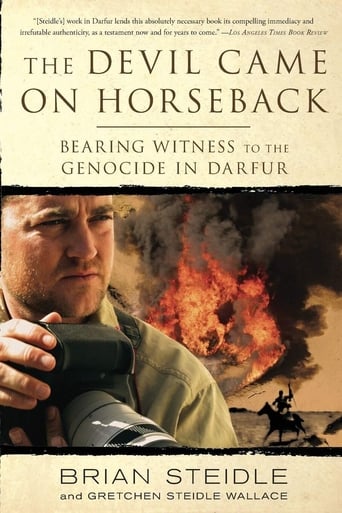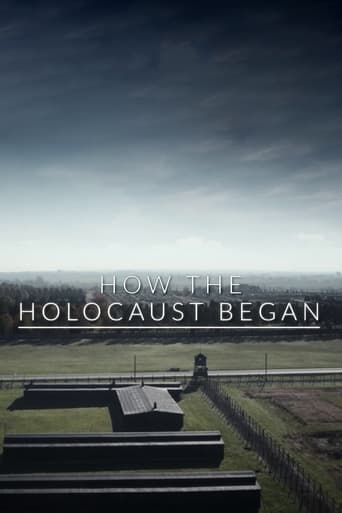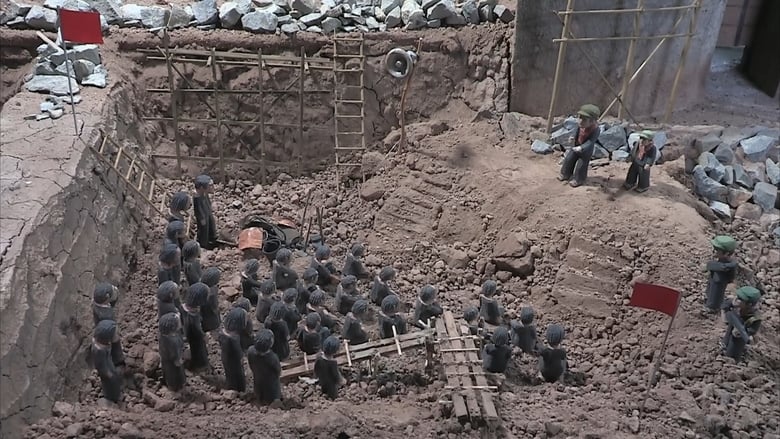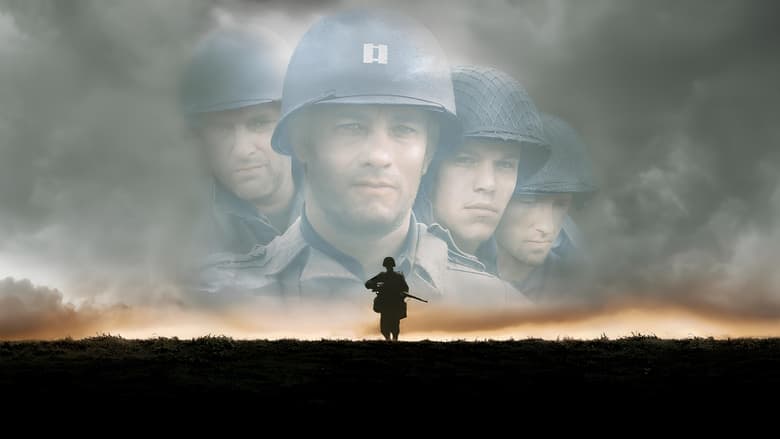Rithy Panh uses clay figures, archival footage, and his narration to recreate the atrocities Cambodia's Khmer Rouge committed between 1975 and 1979.


Similar titles




Reviews
I love me some slow, moody, atmospheric and introspective films. Yet I found this to be really, really slow at times. The premise of using clay figurines is a great one, and at times it really added to the film's power by not forcing images and allowing us to use our imagination, but it was used a lot and together with sort of ho-hum archival footage, and the dreamy narration, I'd be lying if I said I didn't find the film to be really slow to watch at times. It just got a bit repetitive and the subject matter wasn't presented in a more fascinating way. Still, I found some of it effective and the film is pretty original in that way so I have to give it props where they are due.
Cambodia's 2013 entry to the Best Foreign Film category of the 85th Academy Awards, The Missing Picture, concerns a dark topic of history you probably didn't learn about in your high school world history/global connections course. Or perhaps you did learn about it but it quickly escaped your mind, like many other pieces of information. It concerns the tragedy of the Khmer Rouge uprising in 1970's Cambodia, and such a tragedy has never been explored quite like it has been in this particular film.A reading program I was forced to use my freshman year in high school hard an entire unit devoted to the Khmer Rouge and the events surrounding a time of unimaginable darkness for a country many, including myself, know tragically little about. I, admittedly, likely couldn't point to the country on a map. The unit was my personal favorite, as it talked about a journalist by the name of Dith Pran, who found himself victim to the merciless "Killing Fields" that the Khmer Rouge set up during this violent uprising. However, The Missing Picture documents a much more personal story than the highly-publicized Pran story, and instead, focuses on a filmmaker's tragic experience with the event in a style that is highly meditative and deeply fascinating.It was April 17, 1975 that the Khmer Rouge, a communist regime, seized the capital of Cambodia, Phnom Penh. From that day forward, thirteen-year-old Rithy Panh would never be the same, with him, his parents, his relatives, neighbors, and villagers all being led into internment camps, stripped of their belongings and personal possession to be clothed in black cloaks and given a number that would serve as their identity. They endured this abusive and crippling hell for four years, many of them dying or being killed in the process.Thirty-nine years later, Panh has found the courage and strength to create a surprisingly artful picture that literally paints vivid dioramas and ideas as to what endured under the Khmer Rouge regime, led by Pol Pot, an active member of the communist party. Panh employs the use of rare and haunting archival footage, providing the idea for life under Khmer Rouge better than present-day interviews ever could, but Panh's original technique comes in the form of impeccably detailed clay dioramas that provide us with an almost contradictory whimsy to such horrific events.Panh also shows himself painstakingly constructing these unique little clay figures, even getting emotional as he constructs clay figures that represent his deceased parents. He paints them with the lovely imperfections of real humans in terms of color, but paints them with unfathomable accuracy in terms of facial structure and torso-build.What is even more unfathomable is how Panh updates these figures little-by-little overtime, having their ribcages protrude out more, their facial features begin to wither, as well as showing their stomachs enlarge due to the horribly inadequate conditions the Khmer Rouge bestowed upon the communities, and this attention to detail, combined with the absolutely original and unique presentation qualities for a documentary make The Missing Picture a beautifully made film in the visual department.If there's one detractor, it's Panh's narration, which can best be described as monotone and occasionally droning. When the subject matter fits, however, the voice can work to compliment what is going on in the film, but there are times when the film could use a bit more excitement or even identifiable emotion, especially when Panh begins to talk about the alternative routes, good and bad, that could've also happened to Cambodia in the 1970's. When the narration becomes distracting, I found myself sinking out of the exposition and into the visuals or archival footage, which leads me to say this film is much more a visual/audio trip than anything else.Yet this shouldn't distract too heavily from the great qualities The Missing Picture provides us, be them visually or narratively, as it tells us a story many of us haven't heard from a perspective we never quiet expected.Directed by: Rithy Panh.
The Khmer Rouge tried to leave no traces of the Cambodian genocide (1975-79). It could be a crime for anyone outside the Party to have pencil and paper, not to mention camera or tape recorder. Scarcely any images got out.Rithy Panh was thirteen when his family was rounded up. along with the other residents of Phnom Penh, and sent to "re-education" camps and then five years of starvation and rural labor. Now as a survivor looking back at those years, he uses simple clay figures to represent the people who died unrecorded. He juxtaposes them with scraps of propaganda films and other footage, and with manufactured landscapes, while narrating a major 20th century horror story that's also a personal and national tragedy.The film takes all kinds of aesthetic risks: the images are complexly beautiful, but they dare to seem simplistic or naïve, or to skirt "bad taste." The simplicity is more than justified though, as The Missing Picture does recapture a lost time, the artistic triumph inseparable from the human triumph.
Philosopher Albert Camus said, "Good intentions may do as much harm as malevolence if they lack understanding." Indeed, we have seen many examples in history of how ideology, no matter how well intentioned, can lead to disastrous consequences if not tempered with compassion and respect for the rights of the individual. We saw it in Nazi Germany and in the Soviet Union during the Stalin era. There is no more blatant example of the distorted use of ideology than in the 1975 takeover of Cambodia (renamed as the Democratic Republic of Kampuchea) by the Khmer Rouge under the leadership of Pol Pot (aka Saloth Sar).While the goal of the Khmer Rouge was to promote an agrarian socialist economy and eradicate any remaining traces of individuality, their process of forced labor and communal living led to the death of millions of people and when they fled in 1979, they left behind a trail of tears. Only thirteen-years-old at the time, Director Rithy Panh, lost his entire family in Cambodia during those years and has documented his experience in The Missing Picture, winner of the Un Certain Regard award at the 2013 Cannes Film Festival. It is a deeply moving film that uses hand-carved clay figures sculpted by Sarith Mang together with archival news footage and propaganda films used by the Khmer Rouge to paint an overwhelming picture of man's inhumanity to man.Although the sadness etched on the faces of the painted clay figures moving on doll-house sets are somewhat distancing and can only give us a vague idea of the amount of suffering that took place, Panh's affectingly poetic voice-over helps us to bridge that gap by offering the perspective of one who lived through those years. In their four years in control of Cambodia, the Khmer Rouge destroyed food sources outside of centralized control, forbade fishing and the planting of mountain rice, abolished medicine and hospitals, and refused offers of humanitarian aid. Now 50, Panh says that making the film has helped him to come to terms with his memories, reflecting that, "in the middle of life, childhood returns—sweet and bitter." While the film's historical perspective is limited, it gives us a sense of the vibrant life of Phnom Penh before the Khmer Rouge arrived to evacuate the city, uprooting and exiling millions of families to re-educate them in labor camps. Those not needed were told, "To keep you is no benefit, to destroy you is no loss." Those forced to leave were told that the evacuation was meant to protect them from American bombs and they would be able to return to their homes in a few days. Panh refers to the U.S. bombing of Cambodia during the Vietnam War as a factor that persuaded Cambodians to look for an alternative to their current political system but he does not attempt in any way to justify the actions of Pol Pot.The Missing Picture, while grim and perhaps repetitive, is a powerful prayer that no child ever has to again witness what Panh saw: his family forced from a home filled with music and literature, his father going on a hunger strike and dying from starvation and illness; the execution of children who were forced to denounce their parents; sitting on the cold ground night after night watching propaganda films displaying happy faces while outside thousands starved. Under the leadership of Pol Pot, an estimated 2.2 million people died from execution, illness, or starvation, a tragedy that left a legacy of suffering that continues until the present day. Miraculously, Panh survived to tell his story and in The Missing Picture, has left us a testament of unbounded courage.





